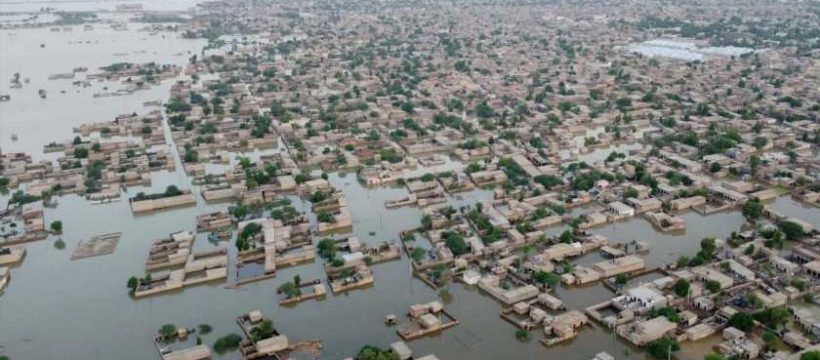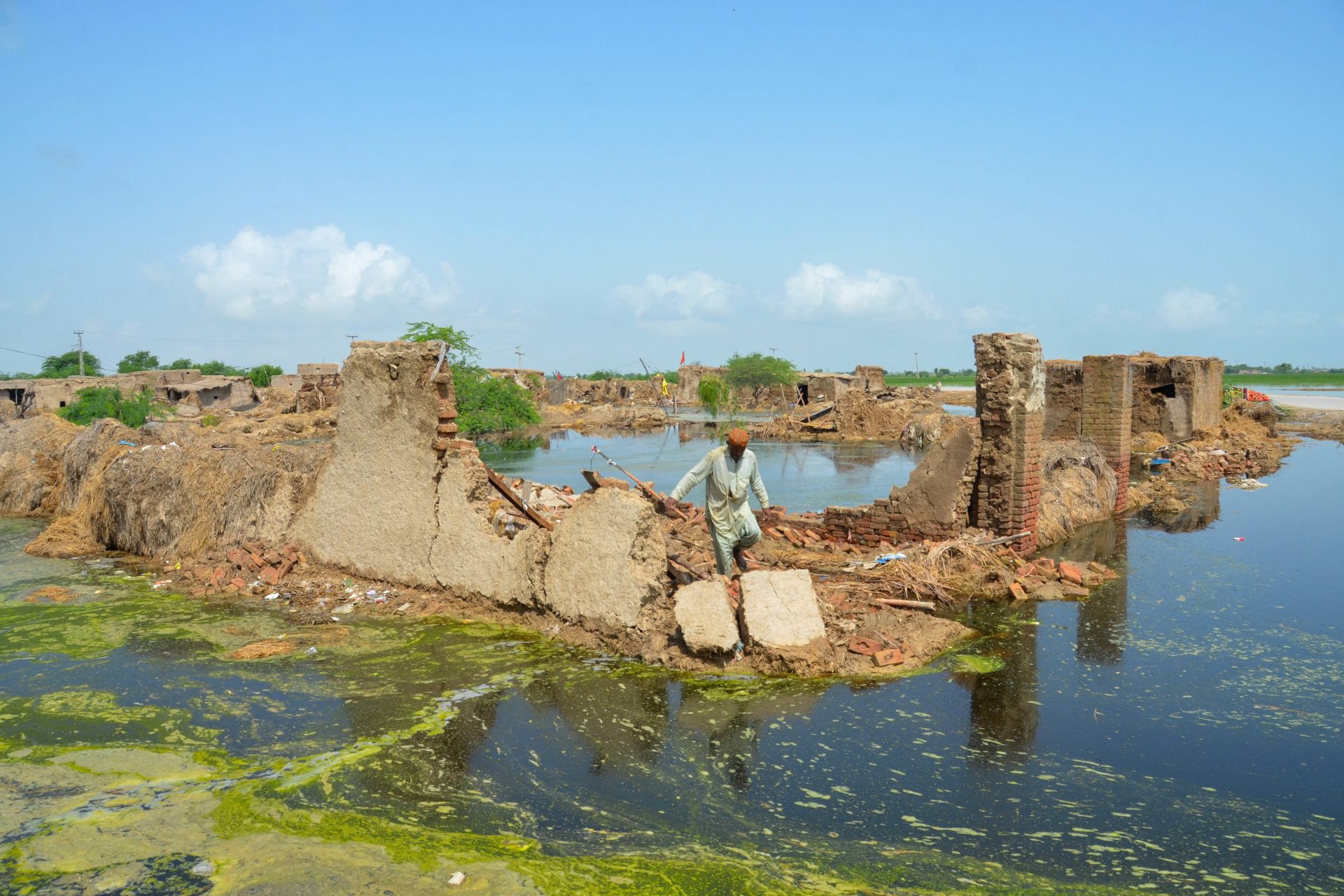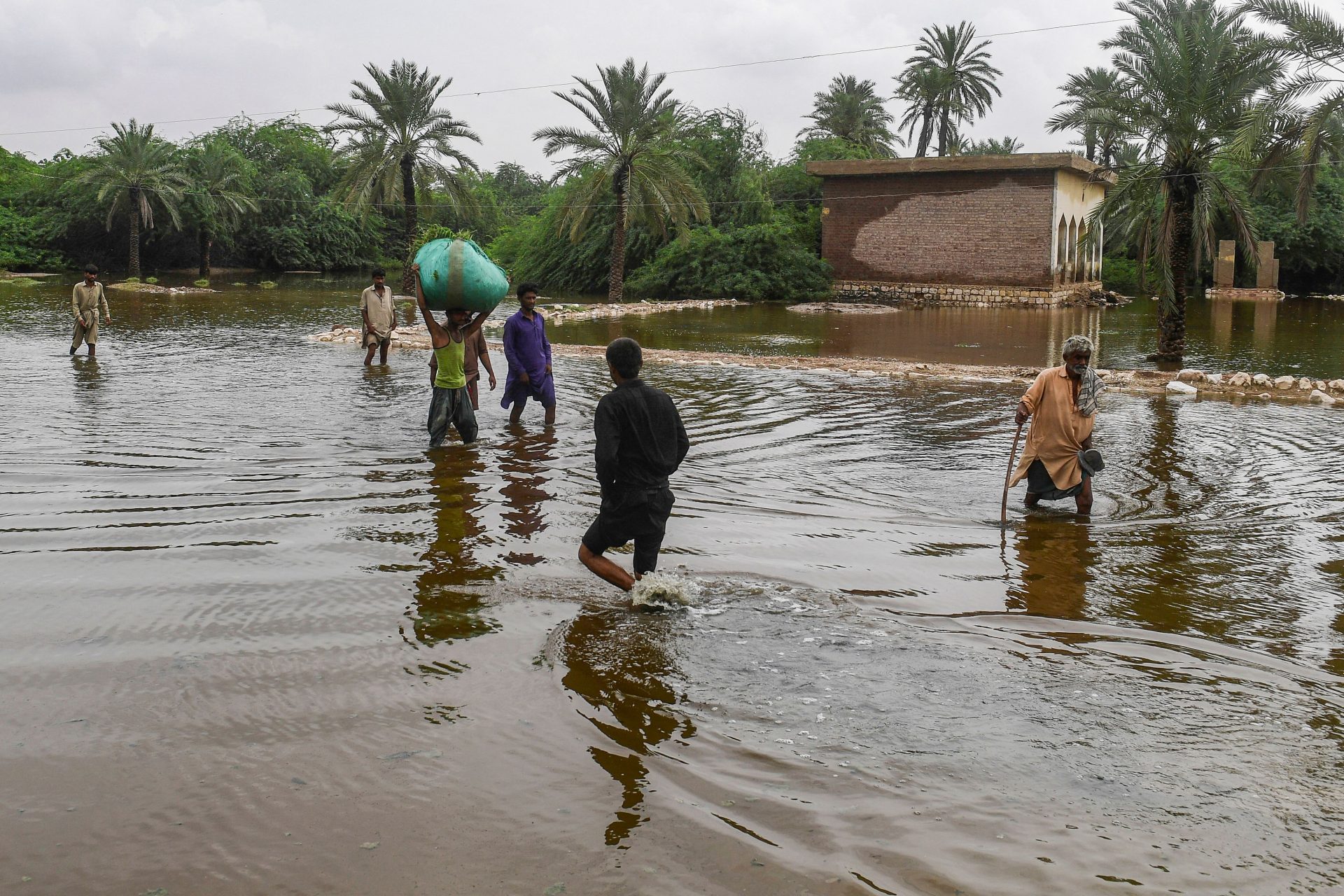Over a third of Pakistan is currently under water after unprecedented monsoon rains fell across the country. Here’s how you can help the 33 million people affected.
If you’ve been keeping an eye on the news at all over the last week, you’ll no doubt have seen the pictures coming in from Pakistan, where widespread floods have led to over a third of the country being submerged.
The result of unprecedented monsoon rains, the floods have destroyed millions of buildings, bridges and roads and impacted the lives of more than 33 million people – with the country’s southern districts of Balochistan and Sindh worst affected.
So far, more than 1,200 people – including over 400 children – have died as a result of the disaster, which humanitarian workers expect to get worse as the monsoon season, which stretches from June until the end of September, continues.
With so many people displaced – and concern over an increase in diseases beginning to rise – aid workers have appealed for donations and support from countries around the world to help those affected. Here’s everything you need to know about the situation so far, including how you can do your bit to help.
What is causing the floods in Pakistan?
The current floods in Pakistan have been caused by a combination of factors – primarily heavy monsoon rains and glacial melt in the north of the country.
While Pakistan experiences a monsoon season every year, this year’s has been particularly bad – with the UN’s secretary-general Antonio Guterres describing it as “a monsoon on steroids” causing “epochal levels of rain and flooding”.
Earlier this year the southern regions of Balochistan and Sindh experienced severe heatwaves and drought, but now the two provinces have received 500% more rain than the annual average – breaking Pakistan’s decades-long rainfall record in the process.
Why are this year’s floods so bad?
While scientists say there are a number of factors at play here, one of the biggest is what you might expect: the climate crisis. Despite producing less than 1% of the world’s carbon emissions, Pakistan’s geography makes it extremely vulnerable to climate change – and this year’s floods are at least in part to do with this fact.
This is due to the fact that warmer air holds more moisture, so as global temperatures increase, monsoon rains are expected to become more intense, like the ones that we’re currently seeing in Pakistan.
The melting of Pakistan’s northern glaciers due to rising global temperatures also means more water is being released into glacial lakes, which are at risk of sudden bursts.
Speaking to The Guardian about the relationship between the floods and climate change, Pakistan’s climate change minister Sherry Rehman said rich countries must pay to help those most affected by the crisis.
“Global warming is the existential crisis facing the world and Pakistan is ground zero – yet we have contributed less than 1% to [greenhouse gas] emissions,” she said.
“There is so much loss and damage with so little reparations to countries that contributed so little to the world’s carbon footprint that obviously the bargain made between the global north and global south is not working.
“We need to be pressing very hard for a reset of the targets because climate change is accelerating much faster than predicted, on the ground, that is very clear.”
What impact have the floods had so far?
The floods in Pakistan have had a devastating impact across the country. On top of the more than 1,200 people who have lost their lives, a further 33 million people – including an estimated 16 million children – have been affected.
At the moment it is believed that over one million houses have been destroyed, two million acres of crops have been affected and more than 750,000 livestock have been killed, with early estimates putting the damage from the floods at more than $10 billion.
At least 12,577 people have also been injured, while it’s believed that 900 health facilities have been damaged or destroyed.
As stands, aid agencies are currently scrambling to provide people with food, water and shelter – but in the long term, there are fears about the spread of waterborne diseases or potential for food shortages due to the number of crops which have been destroyed.
How to help the people affected by flooding in Pakistan
Donate
As always, the number one way you can help the people affected by the floods in Pakistan is to donate to one of the charities that are working on the ground.
The Disasters Emergency Committee’s Pakistan appeal is one of the biggest fundraisers currently working to ensure the people of Pakistan have what they need. Made up of 15 of the UK’s leading aid charities – including Oxfam, Save The Children and the British Red Cross – the appeal aims to provide essential services such as food, shelter, clean water, sanitation and medical supplies.
Other charities working on the ground in Pakistan include The World Food Programme, UNICEF and Medecins Sans Frontieres, all of whom are currently accepting donations.
Spread Awareness
Despite ongoing coverage of the floods online and in print, the crisis still needs all the attention it can get. With this in mind, you might consider reposting a call for donations on social media, talking with friends about what’s going on or starting a fundraiser to spread the word about what’s happening.
Images: Getty
Source: Read Full Article


